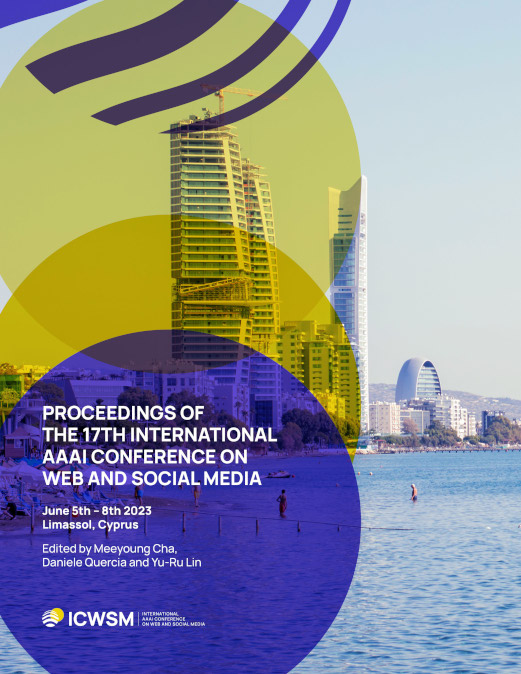The Geography of Facebook Groups in the United States
DOI:
https://doi.org/10.1609/icwsm.v17i1.22151Keywords:
Qualitative and quantitative studies of social mediaAbstract
We present a de-identified and aggregated dataset based on geographical patterns of Facebook Groups usage and demonstrate its association with measures of social capital. The dataset is aggregated at United States county level. Established spatial measures of social capital are known to vary across US counties. Their availability and recency depends on running costly surveys. We examine to what extent a dataset based on usage patterns of Facebook Groups, which can be generated at regular intervals, could be used as a partial proxy by capturing local online associations. We identify four main latent factors that distinguish Facebook group engagement by county, obtained by exploratory factor analysis. The first captures small and private groups, dense with friendship connections. The second captures very local and small groups. The third captures non-local, large, public groups, with more age mixing. The fourth captures partially local groups of medium to large size. Only two of these factors, the first and third, correlate with offline community level social capital measures, while the second and fourth do not. Together and individually, the factors are predictive of offline social capital measures, even controlling for various demographic attributes of the counties. To our knowledge this is the first systematic test of the association between offline regional social capital and patterns of online community engagement in the same regions. By making the dataset available to the research community, we hope to contribute to the ongoing studies in social capital.Downloads
Published
2023-06-02
How to Cite
Herdağdelen, A., Adamic, L., & State, B. (2023). The Geography of Facebook Groups in the United States. Proceedings of the International AAAI Conference on Web and Social Media, 17(1), 351-362. https://doi.org/10.1609/icwsm.v17i1.22151
Issue
Section
Full Papers

